République Génial, Kunst Museum, Bern, 2018
3h 21min., HD, Stereo, Color, 2018
Text Erzsi Kukorelly
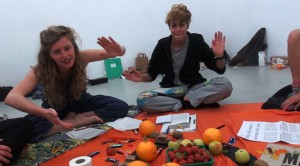
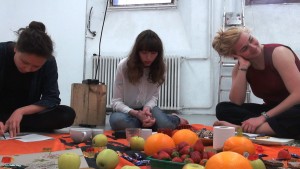
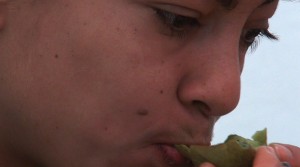
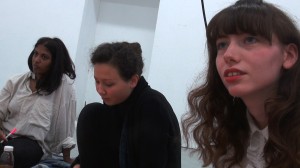

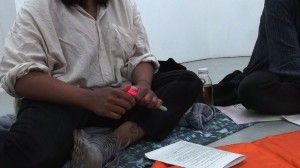
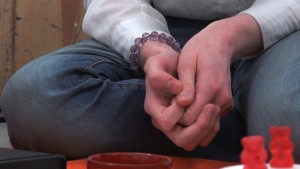
Every interesting aesthetic tendency now is a species of radicalism. The question each artist must ask is: What is my radicalism, the one dictated by my gifts and temperament? This doesn’t mean all contemporary artists believe that art progresses. A radical position isn’t necessarily a forward-looking position.
Susan Sontag, “ Film and Theatre ”, 1966, Pp. 35
The practice of consciousness-raising invites participants to ask questions and to collectively share their thoughts around the topics addressed. Every woman has been confronted by these questions, but has rarely had the opportunity to discuss them in depth, in an all-women environment. By linking each person’s individual experience, the questions take on a different meaning, either a new meaning, or an updated meaning. These topics, which are taken from a catalogue of questions put together by a handful of groups who practiced consciousness-raising in the 1970s, are used here as a point of departure, and give body to the group.
This multiple body, run through as it is by a fresh understanding of the world, reveals through individual consciousness-raising a new sense of becoming woman. The deconstruction of patriarchal social pathologies, far from leading to sterility and stasis, to resignation or even depression, generates a resonating and multiple creative energy.
This energy is be caught by different forms of recording (audio, video), which enables a feminist theory to emerge. Participants will thus be armed to confront the questions thrown up by specific group dynamics. In the film that
we made on 23rd May 2018, the group was composed of students on the Fine Arts MA at the HEAD (Geneva art school). The participants introduced a series of questions specific to the practice of art by women, as well as on the practice of feminist art.
We noticed that through the experience of a consciousness-raising practice, our group achieved extreme sensibility, which led us to seek a form (in the artistic sense of form) for this uncommon state, and to transcribe this singular manifestation of women’s expression.
The film is a 3h21 single take, including an interval. If it was filmed in one day, during which we practiced consciousness-raising, it was the result of eight months’ preparation. The group convened regularly for consciousness-raising sessions that were not recorded. Each stage was vital to build links between the participants, in order to guarantee an internal ethic to the group, which allowed to record and subsequently to diffuse the free and spontaneous exchanges that took place.
The single take is a cinematographic challenge, as it must be filmed in one go. By clearly establishing the rules for filming, each person was aware of the stakes. Thus, the participants had a triple function. First, they are “actors”, they speak singly and one after another; second, they practice “active listening” either in silence or by stimulating the discussion with questions or requests for detail; and third, they are “camerawomen”, holding the camera, framing the action, speakers, listeners. The camera is passed from hand to hand fluidly, following the turn-taking in speech. It captures words, silences, faces, bodies, background, concurrent actions such as drinking, eating, taking notes, drawing, etc.
The point of view changes, and the group is captured from the inside. It was vital for the group not to introduce an exterior, “neutral”, gaze. Hence, the group was born in a temporality of duration, and the group as a whole never appears at once. We could call this a selfie of non-alienated consciousness, as opposed to the narcissistic selfie of a body. The experience is for viewing in real time. The video, which the group watched afterwards, enabled us to conclude that all these questions linked to the practice of radical feminism are highly political, and reactivate the statement of second-wave feminism that “the private is political”.